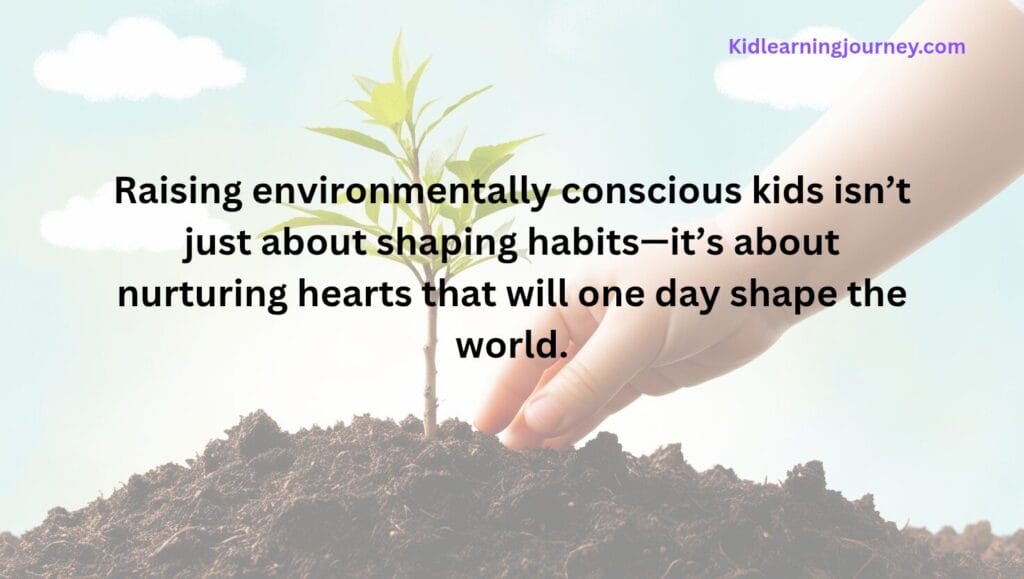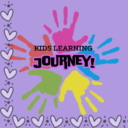
As parents, we want to give our children the best possible future — one that is not only centered around luxuries but also includes necessities, social values, and ethics.
One of the most important things we can do is help them understand the impact they have on the environment and how they can make a positive difference as individuals.
Raising environmentally conscious children is essential in the face of ongoing climate change to ensure a healthy planet for future generations.
The first step in teaching children about the environment is to make it a part of their daily lives.
Here are few things you can do:
1: Ditch Plastic – A Convenient Catastrophe
We’ve all heard the warnings—but have we really taken them seriously?
Did you know that by 2050, there could be more plastic in our oceans than fish? That’s not just a dramatic headline—it’s a real prediction from the Ellen MacArthur Foundation.
Microplastics have already made their way into the food we eat, the water we drink, and even the air we breathe. According to the World Wildlife Fund, the average person could be consuming the equivalent of a credit card’s worth of plastic every week.
According to unep, Every single day, we throw out enough plastic bottles to wrap around the Earth seven times…it’s terrifying.
The question arises who is the miscreant?
Or are we as individuals powerless?
Absolutely not!
In fact, some of the most effective change starts right at home.
Here are a few easy and powerful steps you can take with your kids:
1: Swap out plastic for stainless steel, bamboo, or glass. When kids grow up using sustainable materials, they won’t even miss plastic.
2: Say no to plastic cutlery when ordering takeout. A simple request can prevent unnecessary waste.
3: Always carry an eco-friendly bag. It’s a small habit that makes a big difference.
4: Get creative with recycling! Turn old plastic containers and bottles into fun art projects. It teaches kids the value of reusing and helps them see waste in a new light.
2: Tiny Habits, Big Impact: Raising Eco-Wise Kids Starts at Home
It’s not about being perfect—it’s about being better, one conscious choice at a time. The planet doesn’t need a handful of people doing zero-waste perfectly. It needs millions doing it imperfectly.
Kids may not always listen to what we say, but they sure do watch what we do.
Something as simple as turning off the lights and unplugging electronics when not in use might seem like no big deal—but it sends a powerful message.
According to the U.S. Department of Energy, households can save hundreds of dollars a year—and reduce greenhouse gas emissions—just by managing energy more mindfully.
The average person uses about 82 gallons of water a day at home, says the EPA.
That’s a lot—especially when simple steps like taking shorter showers or turning off the tap while brushing can save gallons daily.
Teaching kids the value of water conservation not only saves resources, it nurtures a mindset of responsibility.
These everyday actions, while small, build the foundation for lifelong sustainable habits. Kids learn by example, and when these lessons are woven into daily life, they become second nature.
The truth is, good habits take years to grow—but planting the seeds today ensures a greener, healthier tomorrow.
Together, as families, our mindful choices create a ripple effect that can shape the future of the planet.
3: Green Lessons: Nurturing Young Eco-Minds Through Everyday Learning
Want to raise a child who genuinely cares about the planet? Start with education—not just at home, but in the classroom, too.
Encouraging your child’s school to weave environmental education into the curriculum is a powerful way to raise conscious, informed kids.
According to UNESCO, early environmental education helps children develop critical thinking skills and a lifelong respect for nature. Whether it’s learning about climate change, pollution, deforestation, or wildlife conservation, kids absorb these lessons best when they’re interactive and age-appropriate.
This doesn’t mean just textbooks and tests. Schools can make it exciting—hosting recycling drives, creating green art projects, or planning field trips to local parks or nature reserves.
These real-world experiences leave lasting impressions far beyond the classroom walls.
At home, reinforce their learning through fun books, engaging videos, and nature walks. When complex issues are explained in a way that’s relatable and hands-on, kids begin to understand not just what’s happening to the Earth, but why it matters—and how they can help.
Raising eco-aware kids isn’t just about facts—it’s about fostering empathy, curiosity, and action.
4: Nature’s Classroom: Teaching Kids to Love and Protect the Planet
Some of the best environmental lessons don’t happen in a classroom—they happen under open skies, muddy hands, and curious eyes.
Spending time outdoors isn’t just good for kids’ health—it’s a powerful way to connect them with the natural world.
A study by the Children & Nature Network found that regular time in nature boosts children’s emotional well-being, attention spans, and environmental awareness. So, why not make the outdoors your child’s favorite teacher?
Take nature walks, explore local parks, or simply start a garden together. Encourage your child to pause, observe, and appreciate the buzzing bees, rustling leaves, and colorful blooms.
When kids feel a personal connection to nature, they’re more likely to care about protecting it.You can also involve them in eco-smart habits like composting food scraps, planting herbs or vegetables, and walking or biking instead of driving short distances.
These small actions not only reduce your family’s environmental footprint—they empower your kids to be part of the solution.
Because when children grow up in nature, they grow up for nature.
5: Raising Earth-Loving Kids Through Community Action
If you want your child to grow into someone who cares deeply about the planet, let them see what real impact looks like—up close and personal.
Getting kids involved in community projects and volunteer work centered on the environment doesn’t just teach them responsibility—it empowers them to become active changemakers. According to research by Harvard’s Making Caring Common project, children who participate in meaningful service activities develop stronger empathy, leadership, and a greater sense of purpose.
Whether it’s cleaning up a local beach, planting trees in the neighborhood, or helping out at a wildlife rescue center, these experiences show kids that their actions matter.
They see firsthand how pollution affects animals, how one tree can transform a space, and how helping hands can heal the Earth.
Plus, volunteering together creates lasting memories and opens up deeper conversations about sustainability, compassion, and the kind of world we want to leave behind.
Because when kids do good, they feel good—and that’s how lifelong environmental stewards are born.
Conclusion:
Teaching children to care for the planet isn’t about perfection—it’s about patience. Every child learns differently, and it’s okay if some take a little longer to grasp these concepts.
What matters most is that they’re trying, and that they feel supported every step of the way.So be gentle.
Celebrate the small wins—like remembering to turn off the tap or picking up litter without being asked. Offer encouragement when they stumble, and remind them (and yourself) that change doesn’t happen overnight.
Because raising environmentally conscious kids isn’t just about shaping habits—it’s about nurturing hearts that will one day shape the world.

